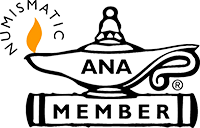Nickel Coin History and Its Impact on Metal Investing
By Bullion Standard ·
5 min read

Shiny gold bar on textured background signifies finance and business concepts.
Nickel coins have held a significant place in U.S. currency history and continue to pique the interest of numismatists and metal investors. Understanding their historical context provides a window into not only the evolution of coinage but also broader metal investment strategies. From their first introduction in the 19th century to modern-day compositions, nickel coins' journey reflects shifts in economic demands, material availability, and cultural values. This exploration highlights their historical evolution and the impact on investment strategies that regard both their artistic and metal value.
Charting the Course: From Composition to Collecting
- Nickel Metal Composition:
The composition of nickel coins is primarily a copper-nickel alloy, known for its strength and durability. Initially introduced in the mid-1860s, this alloy allowed for more wear-resistant coins than the earlier silver and gold. The alloy's composition made nickel coins not only practical for everyday use but increasingly valuable as metal prices fluctuated. This durability contributes to their attractiveness for collectors and investors seeking long-term asset stability.
- Jefferson Nickel:
Introduced in 1938, the Jefferson nickel features the image of Thomas Jefferson, reflecting a national appreciation for historical figures who embody democratic ideals. As the longest-running nickel design, its legacy is entrenched in American cultural and monetary history. This coin's continued production underscores its iconic status and consistent demand among collectors.
- Shield and Liberty Head Nickels:
The Shield nickel, first minted in 1866, marked the U.S.'s inaugural step into producing five-cent coins using the nickel alloy. It symbolized a shift toward more cost-effective coinage following the depletion of silver. By the late 19th century, it transitioned to the Liberty Head design, reflecting societal values and artistic trends of the era, and drawing significant collector interest today.
- War Nickels:
During World War II, the global economic landscape demanded rapid adaptation. The U.S. conserved precious nickel for the war effort, leading to the production of "war nickels" (1942-1945). These featured a distinct silver composition of 35%, making them unique in the nickel series for their high silver content. Understanding the value of historical metal compositions helps investors appreciate these coins for their metal value and their emblematic wartime history.
- Recent Developments:
In the 21st century, changes in composition continue to adapt to economic demands, with nickel prices playing a crucial role. Recent minting processes have further emphasized cost-efficiency without compromising the coin's integrity. This ongoing evolution demonstrates the dynamic interplay between economic shifts and practical coinage production.
Highlights of U.S. Coinage: Unveiling Notable Nickel Coins
- Shield Nickel:
Minted from 1866 to 1883, the Shield nickel was the first U.S. coin to consist predominantly of a nickel alloy. Its production coincided with post-Civil War reconstruction, offering a durable option amidst rising coin demands.
- Liberty Head Nickel:
Produced from 1883 to 1913, the Liberty Head nickel is celebrated for its classic design and rarity, particularly with the famous 1913 issue, making it highly sought-after by collectors and those evaluating investment potential.
- Jefferson Nickel:
First struck in 1938, the Jefferson nickel governs the current landscape of U.S. coins, serving both as an everyday currency and a valuable collectible due to its rich historical associations and plethora of designs, including the Westward Journey Series issued to commemorate Lewis and Clark’s expedition.
- War Nickels:
These coins, minted from 1942 to 1945, break from tradition with their 35% silver composition, reflecting wartime resource management. Their unique characteristics draw investors interested in silver content and historical narratives.

For nickel coin enthusiasts and investors alike, understanding the multifaceted roles these coins play in both history and modern investment strategy provides invaluable insights. Their ongoing evolution offers opportunities to engage with their rich legacy while potentially reaping financial rewards.
Frequently Asked Questions (FAQ)
1. What is the historical significance of nickel coins in the context of metal investing?
Nickel coins represent both historical artistry in American currency and a unique opportunity in metal investing due to their distinct metal compositions over time.
2. How does the composition of a nickel coin affect its value and appeal to investors?
The value is often influenced by materials like the initial copper-nickel alloy and the unique silver content found in war nickels.
3. Which historical figures have been featured on nickel coins, and why were they chosen?
Notably, Thomas Jefferson has been featured since 1938, chosen for his prominent role in American history and alignment with themes of liberty and democracy.
4. How has the role of nickel coins evolved in the financial market over the decades?
They have transitioned from purely functional currency to collectible items of historical and investment interest, particularly in times of economic fluctuation.
5. What considerations should investors keep in mind when adding nickel coins to their portfolio?
Investors should assess the historical context, condition, and metal composition to evaluate potential returns and collectible value.
Discover the Legacy and Value of Nickel Coins
Unravel the intricate tapestry of nickel coins, where history and investment potentials converge. Dive deeper into the world of numismatics with Bullion Standard, and explore how these historical artifacts can play a significant role in your investment strategy. Visit our detailed guide on Bullion Standard to navigate the nuanced journey of nickel coins, enrich your knowledge, and enhance your portfolio today.





















